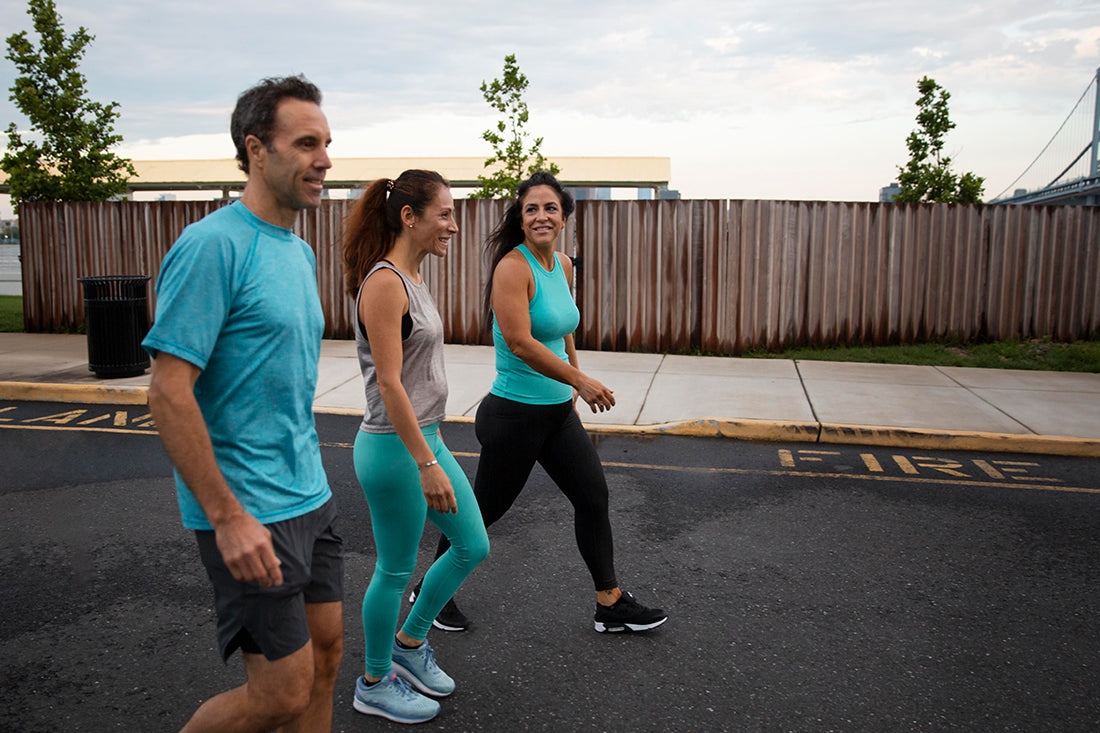Walking workouts have gained popularity over the years for being simple, accessible, and surprisingly effective. But with the rise of fitness trackers, step goals, and wellness influencers, a lot of confusion surrounds the actual benefits of walking — and how to do it right. Many people assume walking 10,000 steps is the gold standard. Others believe walking isn’t “real” exercise. So, what’s the truth?
Let’s break down 9 common myths and facts about walking workouts so you can walk smarter, not harder — no matter your fitness level or age.
Walking workouts: 9 myths and facts to know
Myth 1: You Must Walk 10,000 Steps a Day to Stay Healthy
Fact: There’s no magical number of daily steps.
The idea of walking 10,000 steps a day actually originated from a marketing campaign, not scientific research. While it’s a good tangible goal for some, studies show that walking anywhere from 6,000 to 8,000 steps per day may already offer health and fitness benefits, especially for older adults.
The minimum number of daily steps to aim for can vary depending on your fitness levels and lifestyle. What matters more is consistency and how you feel after your walks.
Myth 2: Walking Isn’t a “Real” Workout
Fact: Walking counts as a genuine form of steady-state cardio.
Walking — especially when done briskly — is a form of LISS (Low-Intensity Steady-State) cardio, which helps support heart and lung function over time. You don’t have to run or lift heavy to engage in meaningful movement. Walking workouts are customizable and can align with your individual goals.
Myth 3: The Faster You Walk, the Better
Fact: Pace matters, but it’s not the only marker of a good walking workout.
Fitness markers like time, consistency, and intensity all come into play. You can walk at a steady pace for 30–45 minutes and still achieve great results. It’s about maintaining a pace that challenges you without exhausting you.
A mix of slow and brisk walking can be just as effective as walking fast the entire time.
Myth 4: Walking Alone Can’t Help You Maintain a Fit Body
Fact: Walking can support a strong, well-functioning body — especially when paired with other movements.
While walking may not build large muscles, it supports stamina, joint mobility, and circulation. When combined with bodyweight exercises or light resistance training twice a week, it forms a well-rounded routine that supports daily functionality.
Myth 5: Step Counts Are the Only Thing That Matters
Fact: The quality of your steps is more important than the number.
Aiming for a number like 10,000 steps can give you structure, but your posture, stride, pace, and terrain play a key role. Walking uphill or on uneven surfaces helps engage more muscles, making each step more effective.
So while step counts are good tangible markers, don’t obsess over the digits. Focus on how your body feels and moves.
Myth 6: You Don’t Need to Track Time If You Hit Your Step Goal
Fact: Time spent walking is a valuable fitness marker.
Even if you reach your daily step count early, it doesn't always mean you've done a workout. Steps accumulated while doing chores are different from a 30-minute intentional walking session. Time and focus make a difference when it comes to steady-state cardio LISS workouts.
Think of walking not just as movement but as a routine — something you do with purpose.
Myth 7: Walking Only Helps Your Legs
Fact: A good walking workout involves more than your legs.
Your arms, core, and posture are all engaged during a solid walking session. Swinging your arms, keeping your core stable, and maintaining good form all help activate multiple muscle groups. With intention, walking becomes a full-body workout.
Myth 8: Young People Don’t Need Walking Workouts
Fact: Walking is helpful for all ages and fitness levels.
Whether you’re 25 or 65, walking can help maintain mobility, endurance, and mental clarity. It's especially great for beginners or those returning to movement after a break. For active individuals, walking can be used as a recovery tool or a low-stress cardio option on rest days.
Myth 9: There’s No Scientific Proof That Walking Makes a Real Difference
Fact: Conclusive scientific evidence shows walking supports various fitness markers.
Multiple studies support that regular walking helps people feel more energetic, sleep better, and support heart function over time. One study even linked walking at a moderate pace with a lower incidence of common heart-related issues in middle-aged adults.
But the real takeaway? You don’t have to do it all at once. Short walking sessions spaced throughout the day still count — and add up.
How to Make Walking Workouts Work for You
If you want walking to feel more intentional and effective, here are a few tips:
- Set a weekly goal. Whether it’s 40,000 steps or 150 minutes of walking per week, give yourself something measurable to work toward.
- Vary the terrain. Try walking on trails, sand, hills, or stairs to challenge your body differently.
- Add intervals. Mix steady walking with 30-second brisk bursts to mimic interval training.
- Stay mindful of posture. Keep your shoulders relaxed, eyes forward, and core engaged.
- Walk with purpose. Even a short 10-minute session after meals helps you stay active and focused.
Final Thoughts
Walking may seem basic, but it’s far from boring. When done with intention and variety, it can support many aspects of physical well-being. The myths surrounding walking often hold people back or create unnecessary pressure. In reality, there’s no “perfect” number of steps or speed to hit. What counts most is how consistent, enjoyable, and sustainable your walking routine feels.
So the next time you wonder whether walking “counts,” remember this: it absolutely does.






